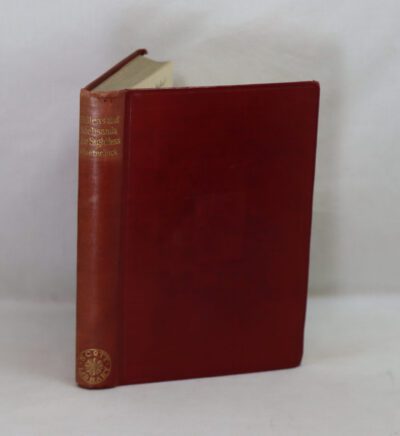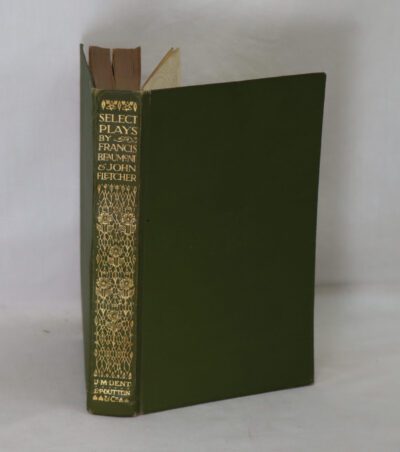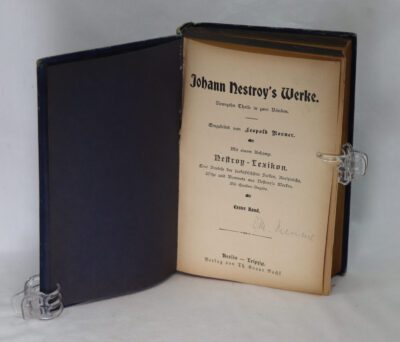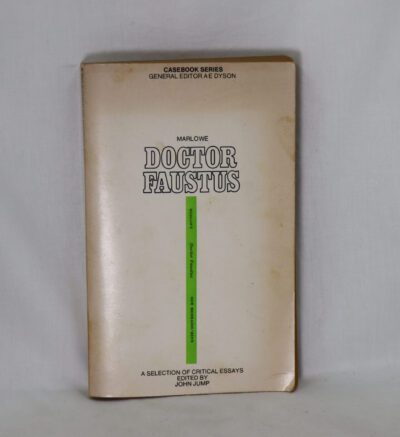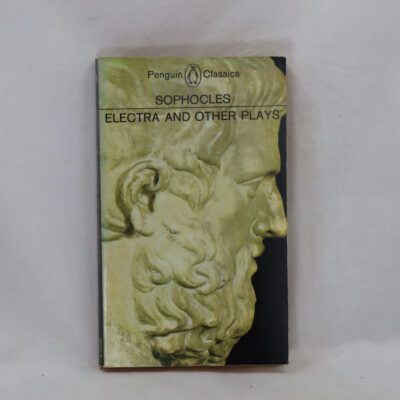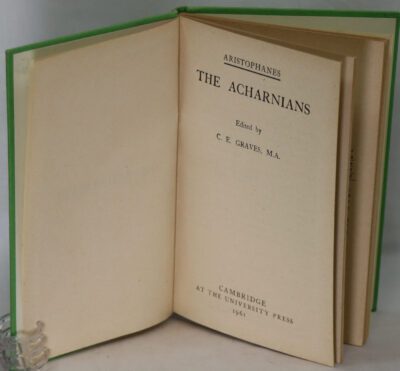Esther Tragedie.
By Jean Racine
Printed: 1855
Publisher: Voigt & Gunther. Leipzig
| Dimensions | 11 × 17 × 2 cm |
|---|---|
| Language |
Language: French
Size (cminches): 11 x 17 x 2
Condition: Good (See explanation of ratings)
Your items
Item information
Description
Green calf spine with gilt title. Red and green marbled boards.
-
F.B.A. provides an in-depth photographic presentation of this item to stimulate your feeling and touch. More traditional book descriptions are immediately available.
Still an excellent reading copy. The cover of this volume is marred by exterior damage to the spine – hence, the much reduced price.
Esther is a play in three acts written in 1689 by the French dramatist, Jean Racine. It was premièred on January 26, 1689, performed by the pupils of the Maison royale de Saint-Louis, an educational institute for young girls of noble birth. The subject is taken from the biblical Book of Esther.
Esther remains one of Racine’s lesser known works as it has only three instead of the classical five acts. It dates from the last period of his career when he entered government work and was requested by Madame de Maintenon to return to liturgical drama. It is often negatively compared to Racine’s 1691 biblical play written for Maintenon, Athalie.
From the 1876 translation of Caroline Andrews:
In the reign of Louis XIV, a seminary for young ladies was founded at St. Cyr, at the persuasion of Madame Maintenon, who gave her entire attention to the education of 250 noble young ladies; who were educated free of expense until their 20th year. Racine was requested to compose a poem suitable for their instruction and amusement, and he proposed the subject of Esther; which he dramatized to the satisfaction of teachers and pupils, and which they declaimed and chanted with so much grace and modesty, that this little drama, intended only for the benefit of young pupils, became the admiration of king and court. Grand lords saw and applauded. As the translator has followed closely the original, she hopes to recommend the same to the attention of lady educators. And knowing that the Jews in the celebration of their Purim always read the book of Esther, it is thought the rehearsal of this drama might make a deeper impression on the minds of their youth and contribute to their entertainment.
Testimonial: The following testimonial from Rabbi Wise of Cincinnati, Ohio: “The English version of Esther by Mrs. Andrews is a masterpiece in my estimation, full of magnificent gems and faithful to the original.”
Jean-Baptiste Racine (22 December 1639 – 21 April 1699) was a French dramatist, one of the three great playwrights of 17th-century France, along with Molière and Corneille as well as an important literary figure in the Western tradition and world literature. Racine was primarily a tragedian, producing such “examples of neoclassical perfection”[ as Phèdre, Andromaque, and Athalie. He did write one comedy, Les Plaideurs, and a muted tragedy, Esther for the young.
Racine’s plays displayed his mastery of the dodecasyllabic (12 syllable) French alexandrine. His writing is renowned for its elegance, purity, speed, and fury, and for what American poet Robert Lowell described as a “diamond-edge”, and the “glory of its hard, electric rage”. Racine’s dramaturgy is marked by his psychological insight, the prevailing passion of his characters, and the nakedness of both plot and stage.
Condition notes
Want to know more about this item?

Related products
Share this Page with a friend





